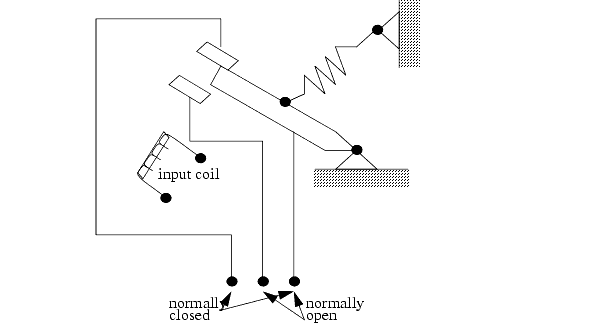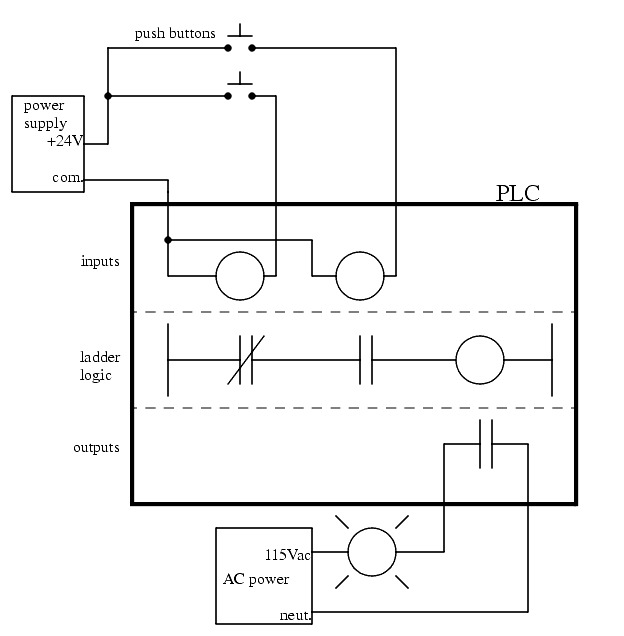
|
|
|
10.3 LADDER LOGIC
������������Ladder logic has been developed to mimic relay logic - to make the computer more acceptable to companies and employees.
Original efforts resisted the use of computers because they required new skills and approaches, but the use of ladder logic allowed a much smaller paradigm shift.
Original relay ladder logic diagrams show how to hook-up inputs to run outputs.
Relay - An input coil uses a voltage/current to create a magnetic field. As the coil becomes magnetic it pulls a metal switch (or reed) towards it and makes an electrical contact. The contact that closes when the coil is energized is normally open. There is a contact that the reed touches without the coil energized is called the normally closed contact. Relays are used to let one power source close a switch for another (often high current) power source while keeping them isolated.

We can then imaging this in context of a PLC. (this idea was suggested by Walt Siedelman of Ackerman Electric)

10.3.1 Relay Terminology
������������Contactor - special relays for switching of large loads.
Motor Starter - Basically a contactor in series with an overload relay to cut off when too much current is drawn.
Rated Voltage - Suggested operation voltage. Lower levels can result in failure to operate: voltages above shorten life.
Rated Current - The maximum current before contact damage occurs (welding or melting).
DC relays require special arc suppression. AC relays have a zero crossing to reduce relay arc problems.
AC relays require a shading pole to maintain contact. If a DC relay is used with AC power on the coil, it clicks on-and-off at the frequency of the AC (also known as chattering).
10.3.2 Ladder Logic Inputs
������������Contact coils are used to connect the PLC power lines to drive the outputs.
The inputs can come from electrical inputs or memory locations.

Note: if we are using normally closed contacts in our ladder logic, this is independent of what the actual device is. The choice between normally open or closed is based on what is logically needed, and not the physical device.
For the Micrologix PLCs the inputs are labelled `I:0.0/x' where x is the input number 0 to 9.
10.3.3 Ladder Logic Outputs
������������The outputs allow switches to close that supply or cut-off power to control devices.
Ladder logic indicates what to do with the output, regardless of what is hooked up -- The programmer and electrician that connect the PLC are responsible for that.
Outputs can go to electrical outputs, or to memory.

We can relate these to actual outputs using numbers (look for these on the front of the PLC).
For the Micrologix PLCs the outputs are labelled `O:0.0/x' where x is the output number 0 to 5.
Search for More: |

Custom Search
|

|